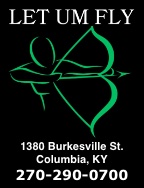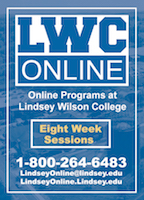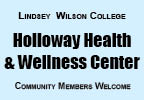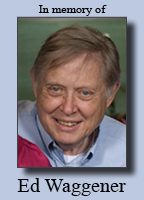| ||||||||||
Dr. Ronald P. Rogers CHIROPRACTOR Support for your body's natural healing capabilities 270-384-5554 Click here for details 


Columbia Gas Dept. GAS LEAK or GAS SMELL Contact Numbers 24 hrs/ 365 days 270-384-2006 or 9-1-1 Call before you dig Visit ColumbiaMagazine's Directory of Churches Addresses, times, phone numbers and more for churches in Adair County Find Great Stuff in ColumbiaMagazine's Classified Ads Antiques, Help Wanted, Autos, Real Estate, Legal Notices, More... 

|
Rev. Joey N. Welsh. Poets for December: Thomas Merton ANOTHER ANGLE: the occasional musings of a Kentucky pastor. This column previously appeared on December 3, 2006 The next earlier Another Angle: By The Rev. Joey N. WelshPoets and Poetry for December, Part II: Emily Dickinson By Rev. Joey N. Welsh E-mail: joey_n_welsh@hotmail.com Poets and Poetry for December, Part III: Thomas Merton Often when I write about people I choose dates near their birthdays for my columns; today's column notes a dath date. Thomas Merton was born on January 31, 1915 in Prades, France. His death anniverseary was ten days ago, the same day that marked the birth of Emily Dickinson. He died in Bangkok, Thailand on December 10, 1968, electrocuted as he touched a faulty electric fan after stepping out of his bath. These two dates are the bookends for the life of an individual, but between the dates came the bountiful spiritual journey of a man who was a Trappist monk, an acclaimed theologian, a contemplative, a best-selling author, a social activist, and a poet. Born to artistic parents (Merton's father found some success with his paintings in his native New Zealand), Merton was baptized as an infant in the Anglican Church. The family left France to come to the United States during World War I. Merton's mother, also an artist, died when he was six years old, and his father was seriously ill by the time Merton was ten. The specter of death shadowed his early years. Merton attended boarding schools in France and England while growing up, seeing his father only occasionally. His father died of a brain tumor when Merton was 16, and his dad's physician and good friend became Thomas Merton's guardian. Gaining admission to Cambridge at the end of his boarding school education, Merton was allowed to have funds for some European travel when he became 18. Traveling through Rome in 1933 he found himself drawn to churches, though he was not a churchgoer, and a visit to a Trappist monastery was simultaneously magnetic and troubling to him. Not yet a Roman Catholic, Merton wrote that already he began to feel drawn to the life of a monk. Leaving Cambridge after a very drunken and undisciplined year, Merton came back to the United States and entered Columbia University in 1935. During his studies there he began to read about Catholic theology and mysticism. He received his undergraduate degree from Columbia. Catholic worship was new to him, and he attended mass at Corpus Christi Church in Harlem. He was baptized there in 1938 and confirmed in 1939 (the same year he received his M. A. from Columbia). He chose James as his confirmation name. Merton knew many folks on the New York literary scene, and he lived in Greenwich Village as he began to pursue a Ph. D. at Columbia. Writers at The New Yorker sought after him to become a staff member for that magazine, but Merton felt led elsewhere. He attended a retreat at the Trappist monastery at Gethsemani, near Bardstown, Kentucky at Easter time in 1941; he entered the monastery there in December, shortly after Pearl Harbor and America's entry into World War II. He was encouraged to write while at Gethsemani, and his spiritual autobiography The Seven Storey Mountain, has remained a best-seller since its 1948 publication. Merton wrote over 50 books. At first drawn to more personal, inner contemplation, Merton came to a crossroads during a trip outside the monastery in 1958. He was in downtown Louisville at a crowded intersection, looking into the eyes of the busy pedestrians, when he realized that he needed to be involved with people and their concerns rather than separated from them. Ever after, even in the meditative atmosphere of a Trappist monastery, he would seek to be a part of the people of the world. Merton's journal note is: March 19, 1958. Feast of St. Joseph Yesterday, in Louisville, at the corner of 4th and Walnut, suddenly realized that I loved all the people and that none of them were or could be totally alien to me. As if waking from a dream -- the dream of my separateness -- of the 'special' vocation to be different. In the next decade Merton's contemplations found connections with the social and political traumas of his day -- racial justice in the 1960's and peace advocacy during the Vietnam War -- and his writings featured dialogue among figures from other world religions. He met with The Dalai Lama in India during his final trip in 1968. Recently I came across a Merton poem that reflects both his life and the message of this season. In The New Yorker of December 23, 1944 is a poem entitled "Carol." It's on page 36, at the conclusion of a two-part story about life aboard the WW II troop carrier ship Marquette. On the same page are ads for the popular New York stage attractions of the day: the play The Voice of the Turtle and a revival of Sadie Thompson, the musicals One Touch of Venus (music by Kurt Weill, lyrics by Ogden Nash, starring Mary Martin) and Bloomer Girl (songs by Harold Arlen and Y. E. Harburg, starring Celeste Holm). The movie ad on page 36 is for the Christmas feature at Radio City Music Hall, National Velvet, starring Mickey Rooney and a very young Elizabeth Taylor, presented along with the Music Hall Christmas shows "The Nativity" and the Rockettes' "Star Bright." There, on a page brimming with the worldliness of New York at the end of the war years, is the poetry of Merton, a man who could have been possessed by a very worldly life but was living already in the monastery at Gethsemani. His words of wonder and of confession still have power as we near Christmas in 2006. CarolNext week: More poetry for December -- Father Jean de Brebeuf and "The Huron Carol," the first Christmas Carol written in North America. E-mail: joey_n_welsh@hotmail.com This story was posted on 2010-12-19 02:41:01
Printable: this page is now automatically formatted for printing.
Have comments or corrections for this story? Use our contact form and let us know. More articles from topic News:
Maps addition to events, stories in beta Printable Schedule: Holiday Classic Tournament Dec. 19-22, 2010 Comment on Big Al safey article: Use seatbelts, restraints Christmas Greeting Cards free for individuals, many others Krishana Melson answers a census question Charles Marshburn answers a census question Bloomington Chapel Christmas program is Dec. 19, 2010 Birds of Kentucky: Our Saturday visitor Charles Marshburn raises a census question WKU undergraduate Commencement today, Dec. 18, 2010 View even more articles in topic News |
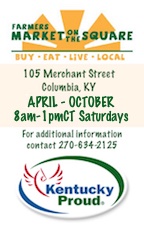

|
||||||||
|
| ||||||||||
|
Quick Links to Popular Features
Looking for a story or picture? Try our Photo Archive or our Stories Archive for all the information that's appeared on ColumbiaMagazine.com. | ||||||||||
|
Contact us: Columbia Magazine and columbiamagazine.com are published by Linda Waggener and Pen Waggener, PO Box 906, Columbia, KY 42728. Please use our contact page, or send questions about technical issues with this site to webmaster@columbiamagazine.com. All logos and trademarks used on this site are property of their respective owners. All comments remain the property and responsibility of their posters, all articles and photos remain the property of their creators, and all the rest is copyright 1995-Present by Columbia Magazine. Privacy policy: use of this site requires no sharing of information. Voluntarily shared information may be published and made available to the public on this site and/or stored electronically. Anonymous submissions will be subject to additional verification. Cookies are not required to use our site. However, if you have cookies enabled in your web browser, some of our advertisers may use cookies for interest-based advertising across multiple domains. For more information about third-party advertising, visit the NAI web privacy site.
| ||||||||||








